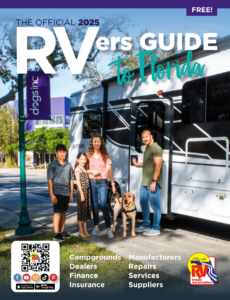RV Campground Checklist – Setting Up Camp
RV camping is one of the most popular forms of vacationing, especially in Florida, where RV parks proliferate among scenic landscape and interesting topography. The state boasts a plethora of parks and other camping opportunities. To get the most out of your camping experience, a campground checklist can help you enjoy wonderful adventures.
Some campgrounds have seasonal events throughout the year that may be of interest. Check before you go. Make it a part of your campground checklist to look for events that may be occurring around the same time. Turn the trip into a special occasion. If you choose a campground near popular tourist areas, you may want to check for shuttle service to alleviate the problem of driving a tow vehicle. If the whole point of your trip is to get away from it all, and a tourist attraction does not appeal to you, the choice is still unlimited. Florida has every kind of campground that you could possibly want in order to fulfill your desires.
Every RV is a little different in the accessories and amenities, but a general RV checklist should assist you with planning. You can make your list applicable to your specific recreational vehicle.
Packing list
- Appropriate clothing. (Don’t forget a rain jacket – it isn’t always sunny in Florida!)
- Gear such as fishing poles, bikes, ATVs, hiking boots, golf clubs, etc.
- Passes, reservations, etc.
- Food.
- Games, electronic devices.
Investigate the site prior to parking
- Locate connections.
- Check the size and orientation of site.
- Make note of any obstructions which may affect your stay.
- Determine how you will enter the site – pull through, back in, or front in.
Arrival at the site
- Before unhooking a two-behind, chock the wheels.
- Level the RV – this is a very important step as operating an RV refrigerator on an uneven surface can cause permanent damage. It is a good idea to place a circular bubble level on top of the fridge to ensure levelness.
- Stabilize the vehicle. If your site is on dirt, sand or gravel, use a block of wood or leveling pad underneath the jacks for better stability.
- Put entry steps in place.
- Hook up the electricity, water and sewer.
- If needed change refrigerator from propane to electric as per manufacturer’s instructions.
- Check that power is going to all electrical appliances.
- Check for water leaks.
- Be sure water is flowing into the RV.
- Turn on the gas.
- Light the water heater, making certain it is full of water first.
- Connect the cable for television or raise the antenna.
- Pull out slide-outs, if applicable.
- Pull out awning and chairs.

